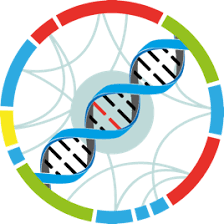Study : Regulatory DNA in A. thaliana can tolerate high levels of sequence divergence
Identification
Name
Regulatory DNA in A. thaliana can tolerate high levels of sequence divergence
Identifier
dXJuOkVWQS9zdHVkeS9QUkpOQTM5NTk5OA==
Description
Variation in regulatory DNA is thought to drive evolution. Cross-species comparisons of regulatory DNA have provided evidence for both weak purifying selection and substantial turnover in regulatory regions. However, disruption of transcription factor binding sites can affect the expression of neighboring genes. Thus, the base-pair level functional annotation of regulatory DNA has proven challenging. Here, we explore regulatory DNA variation and its functional consequences in genetically diverse strains of the plant Arabidopsis thaliana, which largely maintain the positional homology of regulatory DNA. Using chromatin accessibility to delineate regulatory DNA genome-wide, we find that 15% of approximately 50,000 regulatory sites varied in accessibility among strains. Some of these accessibility differences are associated with extensive underlying sequence variation, encompassing many deletions and dramatically hypervariable sequence. For the majority of such regulatory sites, nearby gene expression was similar, despite this large genetic variation. However, among all regulatory sites, those with both high levels of sequence variation and differential chromatin accessibility are the most likely to reside near genes with differential expression among strains. Unexpectedly, the vast majority of regulatory sites that differed in chromatin accessibility among strains show little variation in the underlying DNA sequence, implicating variation in upstream regulators. Overall design: Regions of varying chromatin accessibility were compared across strains of A. thaliana; This series contains RNA-seq data for Col-0 seedlings that were treated with auxin, grown in darkness or control.
Genotype
| Accession number | Name | Taxon |
|---|
